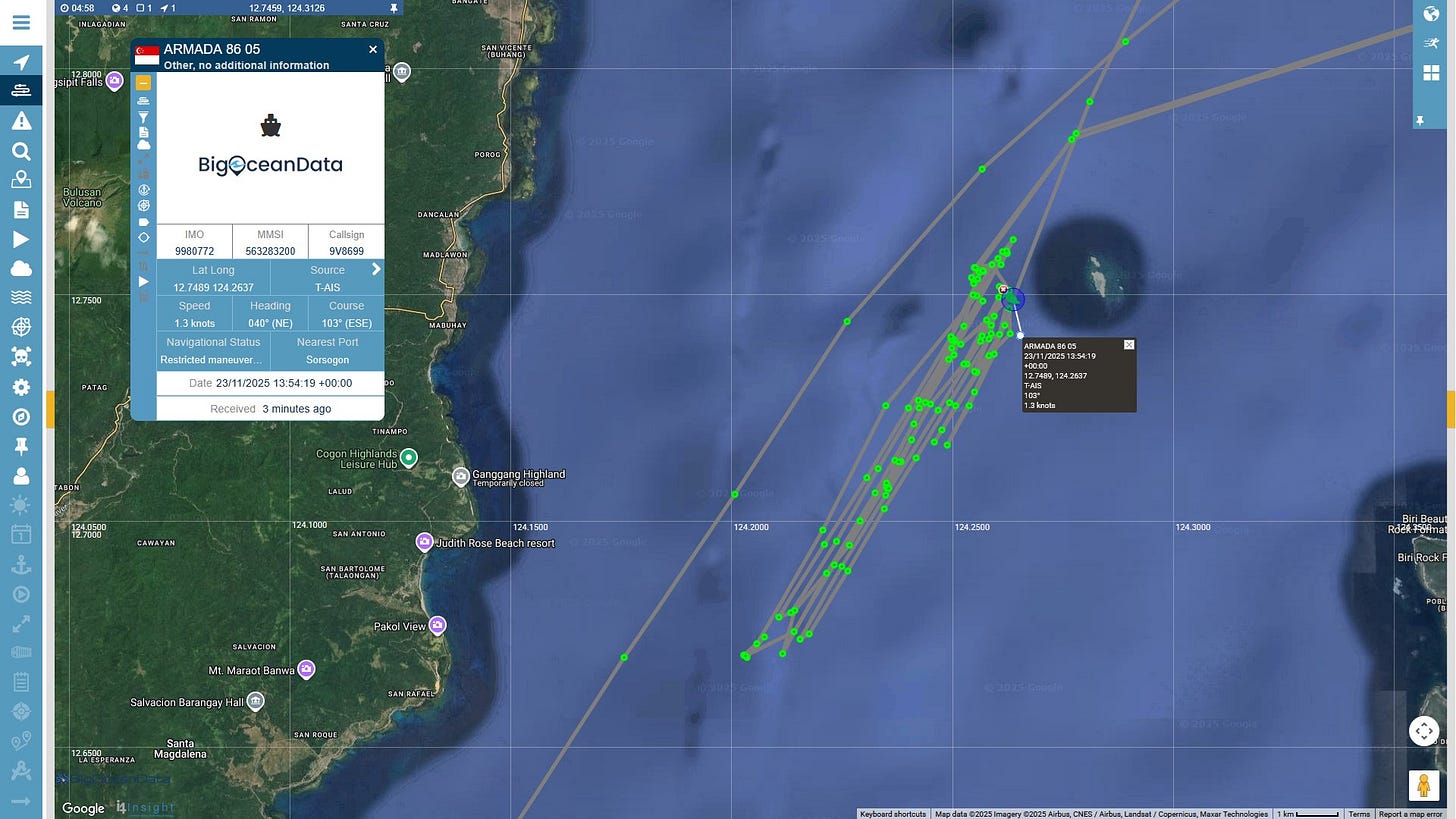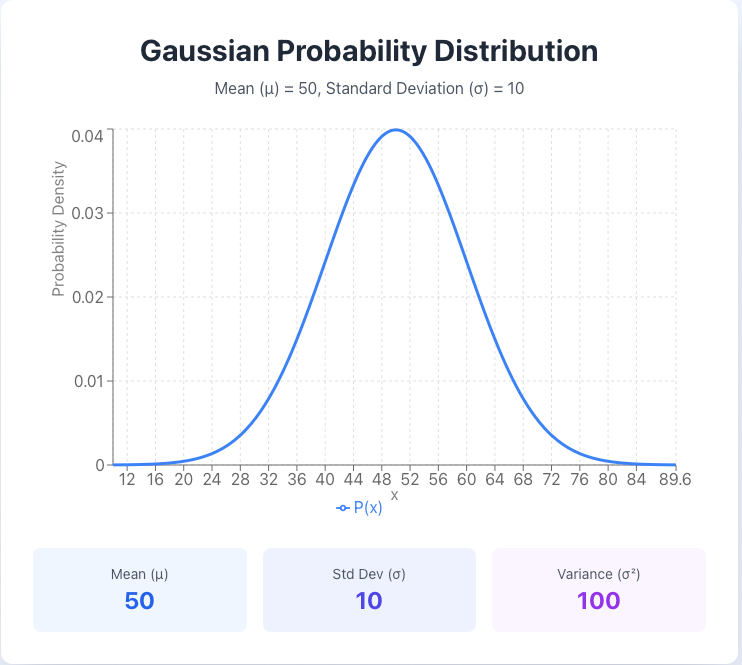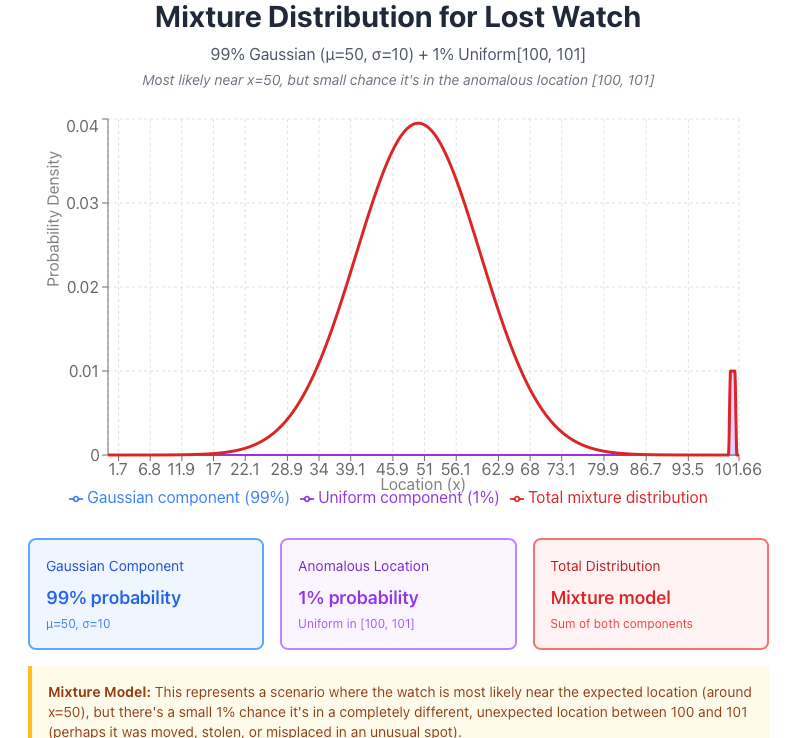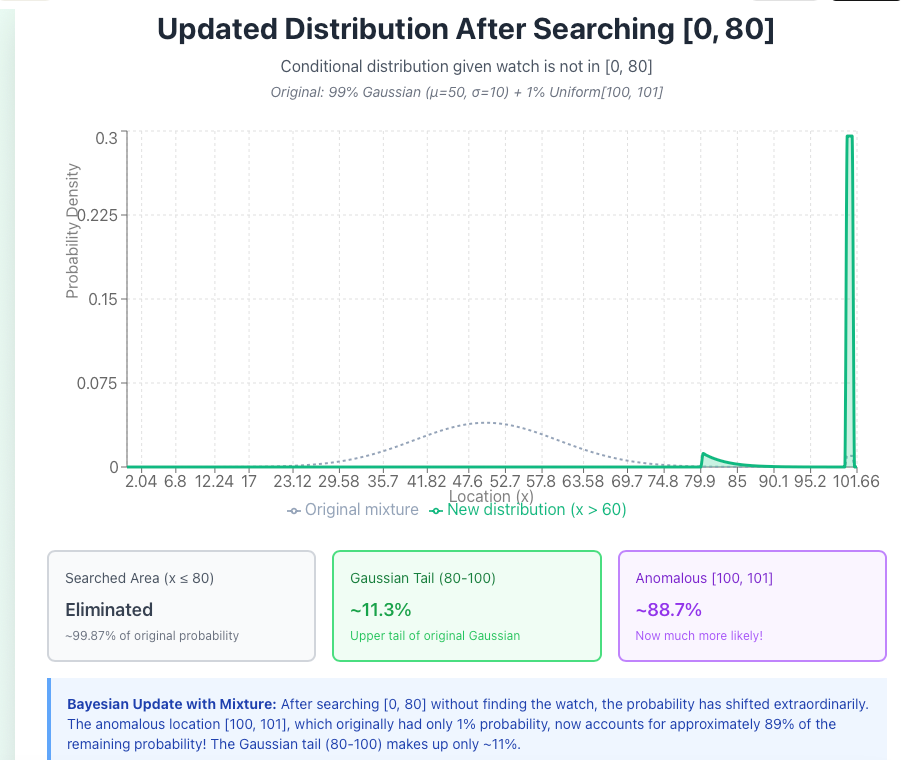Where They'll Look [S2Ep42 video]
The seabed search for MH370 is expected to restart soon. But where?
Ocean Infinity’s state-of-the-art offshore support vessel, Armada 86 05, is currently on duty in the Philippines, about halfway through what is expected to be a two-week expedition to search the San Bernardino Strait for historical shipwrecks. Once it’s done, it will need to resupply, and then it will likely head to the southern Indian Ocean to once more take up the seabed search. In today’s episode, we look at where I think it will go first, and I dive into the mathematics of probability to explain why Ocean Infinity likely thinks that their chances of success are quite high — and why they might have miscalculated.
First, here’s the latest position of Armada 86 05, which sailed from Singapore on November 8 and arrived at the port of Matnog on November 16. From there it began zig-zagging up and down the strait in a typical search pattern, as it launches and retrieves the three AUVs that it is believed to be carrying. This image is from Kevin Rupp, who has emerged as one of the most reliable chroniclers of Ocean Infinities search efforts:
This work should carry on for another week or so. Once it’s done, Kevin and others suspect that this vessel will return to port for refueling and resupply before heading to the MH370 seabed search area near the 7th arc in the southern Indian Ocean.
It’s a long way — over 3,000 nautical miles, as the crow flies — so it will take some time for the ship to get there. Add in the time it will need to spend in port, and it’s unlikely that it will begin the seabed search much before mid-December, at the earliest. Needless to say, whatever happens, I’ll be sure to keep you apprised.
Once the ship arrives on station (assuming it does), where will it look? You’ll recall that a sister ship, Armada 78 06, spent much of March scanning an an area at the corner of the search area that Australian scientists had originally identified back in 2015 (the rectangle outlined in black below).
This is at the southern edge of an area that Victor Iannello and some of his colleagues have identified as a high-probability area, and my best guess would be that when it returns to the area Ocean Infinity will continue tracing that green squiggle to the northeast, along the eastern edge of an area that the company previously searched in 2018.
It may seem a little surprising that Iannello and Ocean Infinity consider this a high-probability search area, given that when Australian scientists first calculated the probability distribution for the plane’s location, this part of the seabed was given a fairly low rating. What’s changed is that in the meantime, all of the high-probability areas have been searched.
According to Bayes’ Theorem, if you have a probability distribution for where a missing object must be located, for instance one that looks like this:
And then you search out a major portion of it, like this:
… the probability density in the unsearched area actually goes up dramatically. In particular, the area right at the edge of the previously explored area becomes very high. I think this is the logic that’s underlying the current phase of the Ocean Infinity search.
There’s an important assumption at play here: a 100 percent conviction that the plane must be on the southern seabed. To Ocean Infinity, it is inconceivable that anyone maliciously altered the Inmarsat data.
Contrariwise, if there’s even a small initial chance that the search assumptions are wrong, that chance becomes steadily larger and larger as the search progresses without success.
We can demonstrate this idea mathematically by going back to that original imaginary probability distribution and add an “anomaly” of one percent, which we represent as a little nub between 100 and 101:
At the beginning, the probability that the missing object lies outside the normal probability distribution is tiny. But if we search out a major part of the area under the main curve, that nub gets larger and larger.
If we search out 99.87 of the original probability distribution without success, the chance that the search assumption was wrong becomes nearly 90 percent!
Another way of putting this is that if you’re pretty sure that an object lies somewhere in a given probability distribution, and then you search out almost all of it, then the chance becomes really good that it isn’t in there at all.
Note that there’s no way to tell for sure, from first principles alone, which scenario is correct. Have investigators merely been really unlucky, and the missing plane has been lurking in the far fringes of the probability distribution all along? Or did they make a flawed assumption at the outset, and the plane is somewhere else entirely?
It’s worth noting that each hypothesis implies a different result for the coming search. If Ocean Infinity was right and the plane has to be in the southern ocean, they’ll likely find its wreckage in the coming weeks. If they were wrong, they won’t.
I, for one, will have my popcorn ready…








